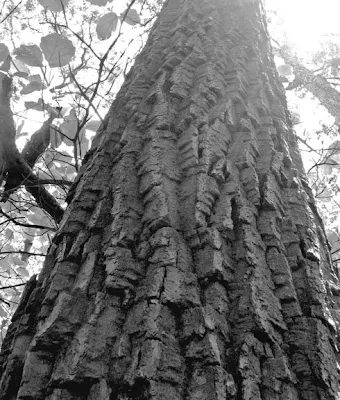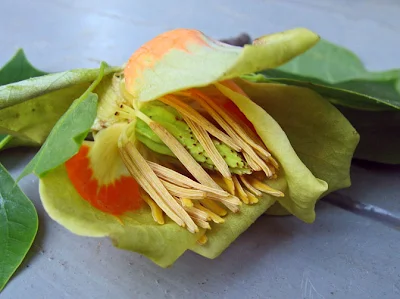In Search Of: Tulip Tree

I'm on the trail again. This time its Yellow. As I mentioned in another post, I had anticipated that the Weir Preserve contained an Oak-Tulip forest community. I had thought the Acer pennsylvanicum was the Tulip Tree because the similarity of the leaf shapes. I was wrong, yet I wasn't ready to give up...

Check out this guy. Hmm, I spotted it from 66 inches up, it being on the ground -could it be more red in a green world? A few millimeters in size and six legs. If I had my Audubon Society Eastern Forests book I know I could ID this one. Alas, I do not and Mr. Red scuttles on.

The Wintergreen (thanks for the ID, Michelle) is coming up in patches now. Flowers beginning to take shape.

I saw four Eastern Newts on my hike. Plain as day, right on the trail. When you go near them, they do not move -unlike a lizard, which would scurry off. These juvenile Newts, called Efts, secrete a poison from their skin -so glad I didn't touch it. Efts are Newts, Newts are Salamanders. Efts then, are Salamanders, but Salamanders are not necessarily Newts. Got it?

What's this? Yes, phallically shooting through the canopy of maples and oaks, but no lower branches, no leaves to ID.
The Tulip Tree is the tallest deciduous tree in the eastern forest of North America. Clearly this tree that I found is tall, shooting above the canopy, and I have the flower piece from nearby. Still cannot make out the leaves, I cannot ID the tree, and move on.
Another mile or so down the trail my wife spots this double. Same bark as before. And. And. Yep, we can see the flowers when the sun hits it just right. Bingo.
Below the tree I find my photo-worthy evidence. The goose-footed leaves of Liriodendron tulipifera complete with flower bud! It seems now ridiculous that I confused the goose foot maple leaf with the tulip tree leaf. The tulip leaf is waxy, thicker, lighter underneath, and not serrated. I do not spend enough time in the woods.
On the left is the Tulip Tree bark. On the right, for comparison, the bark of the Chestnut Oak. Tree bark is just plain bark until you start naming trees. The Chestnut Oak has serious bark. What is amazing about the Tulip Tree is how straight it grows. Its eastern competitors for height, the Eastern White Pine and Eastern Hemlock are also straight growers. Something about height, shooting above the canopy, makes for straight trunks.
The tulip-like flower and the goose foot-like leaves of the Liriodendron. It's of the Magnolia family and is native to the eastern N.A. forest. However, not a good yard (an estate...) or street tree, despite its flowers and straight trunk. Its a forest dweller -demanding the moisture and wind protection the forest provides. Go to the woods, enjoy.








Red spider mite?
ReplyDeleteThe newt is so CUTE!
Love tulip trees. The neighbous had one, growing up. I thought it was the most beautiful thing I'd seen.
Too big for the spider mite, but exactly the color.
ReplyDeleteCute Nute.